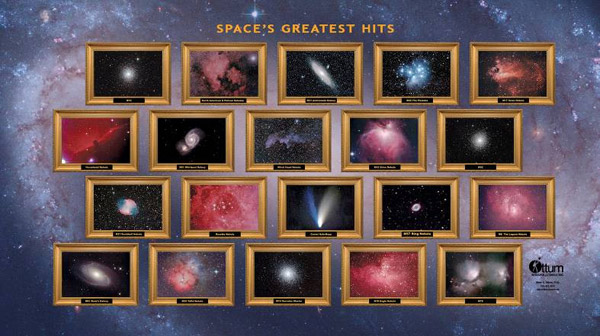

I wrote an article for the newsletter a few years ago entitled “Climbing the Imaging Mountain” [see Brian Ottum. “Climbing the Imaging Mountain—First Installment.” July, 2006]. in which I talked about all the factors that impact astronomical imaging. This article is simpler. I will just tell about how I learned how to take pretty pictures of the night sky—by screwing up and trying to learn from those mistakes.
The two most critical factors in taking a great image are FOCUS and TRACKING. These two will bedevil me forever, no matter how hard I work or how fancy my equipment gets.
I’ve spent half an hour focusing the camera carefully, and then moved the scope to find the object. Days later (when I download the frames) I see that focus is messed up on one side of the frame. It’s because the camera was not totally flush up against the focuser, and the set screw not tight. The new “lean” just tipped it a bit and that’s enough to ruin a shot.
Telescope tubes contract when the evening gets colder. This moves the focus up and outward. For years, I have not thought of this. Being inherently lazy, I just focus at the beginning of the evening and call it done. I’ve recently noticed that the shots taken at the end of the night often have blobby, unfocused stars (especially if the night is cooling fast). Oops.
I used to balance my scope so that the tube & camera were exactly the same weight as the counterweight. Dumb. The rotary worm gear would bump the drive gear teeth periodically, and the scope would move a few arc seconds (the RA “backlash”). All the stars would have periodic lines. Some frames would be great, others have lines. I scratched my head for weeks on that one. Finally, I found out that whatever is on the east side of the mount (either the tube or the counterweight) needs to be just a pound or two heavier so there’s no more “bumping.”
One night I got everything set up but just could not find the faint NGC galaxy I wanted. Gave up and went inside. A couple weeks later (when it was clear again) I went through the same setup procedure. I realized that I was aligning the scope on the WRONG STAR! [Idiot me]
One night I hit the “lunar rate” button so the scope changed its tracking rate from the normal sidereal rate. Everything was messed up.
I got an autoguider to help the tracking. Works great. But I wasted a night fighting with it, later to realize that the software needs me to do a completely new calibration once the object switches from the eastern to the western sky.
A couple years ago I left my winter coat in my dome, to use it on the cool September nights. I was excited to image NGC 4565, the great edge on galaxy. Everything was set up and running, taking 90 minutes’ worth of frames. Shortly into it, I got cold and picked up the coat. After putting it on, I got the feeling that someone was making multiple PAINFUL injections into my neck. I hopped around frantically, trying to get the coat off. Finally I did and was able to brush the wasp off my neck. The next day, I see that there were no frames after the first few. In my jumping around, I had unplugged the scope.
Two weeks ago, I identified a new NGC nebula that I had never imaged. So I set up finder charts and spent 3 hours getting images. The next day I realized that I had imaged the object just a week earlier! Yes, I am getting senile.
One time I accidentally deleted all the frames off of the memory card before downloading them to my computer.

My son recently put some of my best shots on my website. I call it “Space’s Greatest Hits.” He found some programming that helps do nice zooms of each shot. I encourage you to check it out and get back to me with comments.
http://www.ottumresearch.com/astrogallery/index.html
I’m wrapping up a MONSTER mosaic of all 110 Messier objects, in a format that’s a bit more artistic than the boring grid pattern. That will be a future article and zoomable web page.